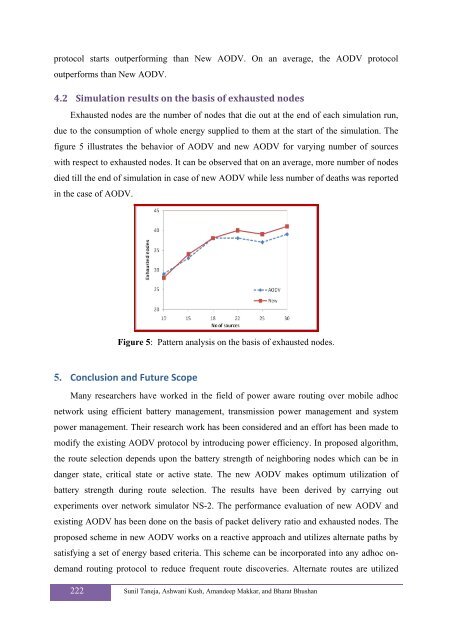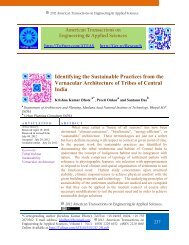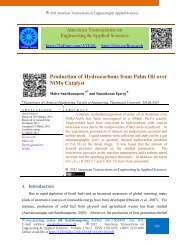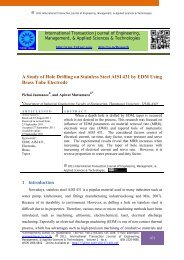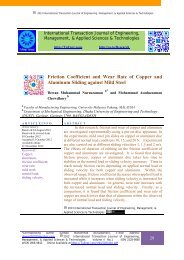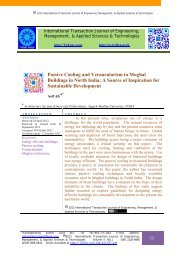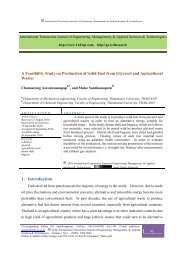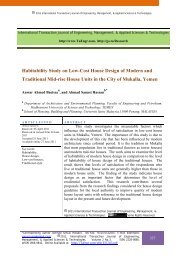Power Management in Mobile Adhoc Network - International ...
Power Management in Mobile Adhoc Network - International ...
Power Management in Mobile Adhoc Network - International ...
Create successful ePaper yourself
Turn your PDF publications into a flip-book with our unique Google optimized e-Paper software.
protocol starts outperform<strong>in</strong>g than New AODV. On an average, the AODV protocol<br />
outperforms than New AODV.<br />
4.2 Simulation results on the basis of exhausted nodes<br />
Exhausted nodes are the number of nodes that die out at the end of each simulation run,<br />
due to the consumption of whole energy supplied to them at the start of the simulation. The<br />
figure 5 illustrates the behavior of AODV and new AODV for vary<strong>in</strong>g number of sources<br />
with respect to exhausted nodes. It can be observed that on an average, more number of nodes<br />
died till the end of simulation <strong>in</strong> case of new AODV while less number of deaths was reported<br />
<strong>in</strong> the case of AODV.<br />
Figure 5: Pattern analysis on the basis of exhausted nodes.<br />
5. Conclusion and Future Scope<br />
Many researchers have worked <strong>in</strong> the field of power aware rout<strong>in</strong>g over mobile adhoc<br />
network us<strong>in</strong>g efficient battery management, transmission power management and system<br />
power management. Their research work has been considered and an effort has been made to<br />
modify the exist<strong>in</strong>g AODV protocol by <strong>in</strong>troduc<strong>in</strong>g power efficiency. In proposed algorithm,<br />
the route selection depends upon the battery strength of neighbor<strong>in</strong>g nodes which can be <strong>in</strong><br />
danger state, critical state or active state. The new AODV makes optimum utilization of<br />
battery strength dur<strong>in</strong>g route selection. The results have been derived by carry<strong>in</strong>g out<br />
experiments over network simulator NS-2. The performance evaluation of new AODV and<br />
exist<strong>in</strong>g AODV has been done on the basis of packet delivery ratio and exhausted nodes. The<br />
proposed scheme <strong>in</strong> new AODV works on a reactive approach and utilizes alternate paths by<br />
satisfy<strong>in</strong>g a set of energy based criteria. This scheme can be <strong>in</strong>corporated <strong>in</strong>to any adhoc ondemand<br />
rout<strong>in</strong>g protocol to reduce frequent route discoveries. Alternate routes are utilized<br />
222 Sunil Taneja, Ashwani Kush, Amandeep Makkar, and Bharat Bhushan


